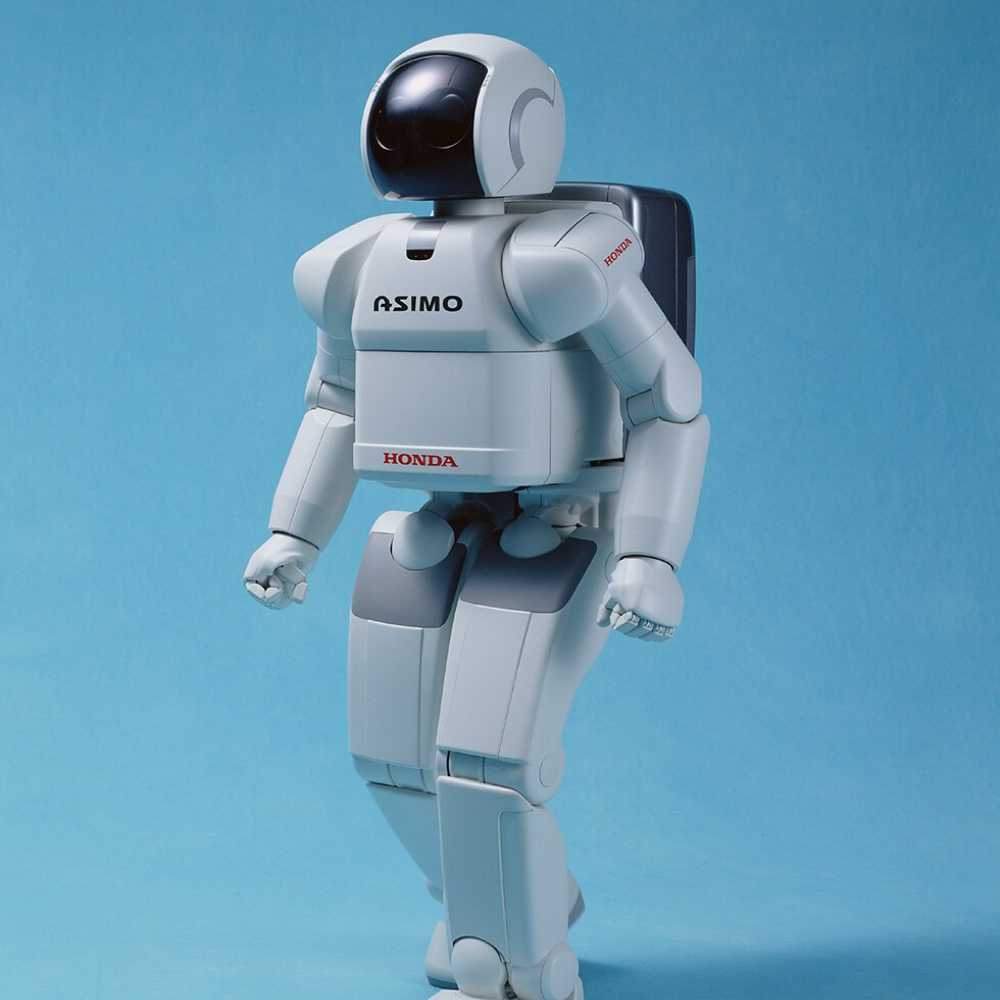ASIMO (Advanced Step in Innovative Mobility) is one of the world’s most recognizable humanoid robots. Developed by Honda and introduced in 2000, ASIMO was designed to function in human environments and assist people with mobility needs. The robot was the result of over 15 years of research into bipedal locomotion and human-robot interaction. Unlike earlier prototypes that were bulky and slow, ASIMO featured a compact design, smooth walking ability, and a friendly appearance that made it suitable for public interaction.
ASIMO stood at just over four feet tall and weighed around 106 pounds, making it small enough to navigate through standard doorways and hallways. It could walk, run, climb stairs, and turn smoothly while maintaining balance. Honda engineered the robot with 34 degrees of freedom, allowing for highly coordinated motion across its body. Built-in sensors—including gyroscopes, accelerometers, and force sensors—enabled ASIMO to adjust in real time to changing surfaces, inclines, and obstacles. These capabilities helped establish ASIMO as a leader in humanoid mobility during its time.
In addition to advanced locomotion, ASIMO also featured impressive perception and interaction systems. Stereo cameras in its head gave it 3D vision, and microphones allowed it to localize and respond to sound. ASIMO could recognize people’s faces and voices, follow commands, and even perform simple tasks like serving drinks or pushing carts. It became a popular public figure at science museums, tech exhibitions, and live demonstrations, where it often waved, danced, or jogged to showcase its balance and coordination. Honda intended ASIMO not for commercial sale, but as a proof-of-concept for future human-assistive technologies.
Conclusion
ASIMO’s development helped Honda explore cutting-edge robotics, AI integration, and real-time motion control. Over the years, the company improved its hardware and software, refining the robot’s response time, dexterity, and autonomy. In 2018, Honda retired the ASIMO project to shift toward more practical robotics and mobility research. However, the robot’s legacy remains deeply influential. It inspired a generation of engineers and set new standards in humanoid design. ASIMO didn’t just demonstrate what robots could do—it reshaped what people imagined robots would become.







